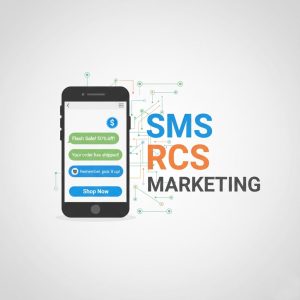Mastering Mobile Penetration Strategy: The Ultimate Guide for App Success in 2025

Understanding Mobile Penetration in Today’s App Ecosystem
In today’s hyper-connected digital landscape, developing a robust mobile penetration strategy has become essential for app developers and businesses looking to carve out a significant market share. With over 7.1 billion smartphone users worldwide and app downloads exceeding 255 billion annually, penetrating the mobile market effectively requires sophisticated approaches beyond traditional marketing methods.
Mobile penetration strategy encompasses the systematic techniques and methodologies used to introduce, establish, and expand a mobile application’s presence in targeted markets. This strategy goes far beyond simple user acquisition tactics, incorporating deep market analysis, competitive positioning, and sophisticated user engagement frameworks that drive sustainable growth.
At mobiledominate.com, we’ve seen firsthand how effective penetration strategies can transform app performance metrics across various industries. This comprehensive guide will walk you through developing and implementing a winning mobile penetration strategy that positions your app for maximum impact and long-term success.
The Current Mobile App Market Landscape
Before diving into strategy development, understanding the current mobile ecosystem is crucial. As of 2025, the global mobile app market continues to experience significant growth, with several key trends shaping the competitive landscape:
Market Saturation and Opportunities
The app stores have become increasingly crowded, with approximately 3.5 million apps on Google Play and 2.2 million on Apple’s App Store. This saturation presents both challenges and opportunities for newcomers and established players alike. According to App Annie’s State of Mobile Report, users spend an average of 4.8 hours daily on mobile applications, representing a massive engagement opportunity.
User Behavior Shifts
Mobile users have become more discerning about which apps they download and retain. The average smartphone owner uses approximately 25 apps monthly but spends over 80% of their time on just five applications. This concentration of attention emphasizes the importance of not just acquiring users, but ensuring your app becomes part of their core usage habits.
Competitive Intensity
Competition has intensified across virtually all app categories. A study by SensorTower reveals that approximately 65% of newly launched apps fail to reach 1,000 downloads within their first year. Standing out requires innovative approaches to both product development and market penetration.
Core Components of an Effective Mobile Penetration Strategy
Developing a comprehensive mobile penetration strategy involves several interconnected components that work together to maximize your app’s market reach and adoption rate. Let’s explore each essential element:
1. Thorough Market Research and Segmentation
The foundation of any successful penetration strategy begins with thorough market research. This involves:
Identifying Target Markets
Conduct comprehensive demographic and psychographic analysis to identify the most promising market segments for your app. Consider factors such as:
- Age demographics
- Geographic distribution
- Device preferences
- Usage patterns
- Pain points and needs
- Technology adoption rates
Your penetration strategy should prioritize markets where your app can deliver maximum value and face manageable competition levels.
Competitive Analysis
Perform detailed competitive analysis by examining:
- Direct competitors offering similar functionality
- Indirect competitors solving the same problem differently
- Feature comparisons
- Pricing models
- User acquisition strategies
- Retention rates
Understanding the competitive landscape helps identify gaps and opportunities your app can exploit.
2. Strategic App Store Optimization (ASO)
App Store Optimization serves as the cornerstone of organic discovery and represents a critical aspect of your penetration strategy:
Keyword Research and Implementation
Conduct extensive keyword research to identify high-traffic, low-competition terms relevant to your app. Tools like AppTweak and Mobile Action can provide valuable insights into search volume and difficulty metrics.
Strategic keyword placement should include:
- App title and subtitle
- App description
- In-app purchase names
- Developer name (when appropriate)
Visual Assets Optimization
Optimize visual elements to maximize conversion rates:
- App icon (ensure it stands out in crowded categories)
- Screenshots (highlight key features and benefits)
- Preview videos (demonstrate core functionality)
- Feature graphics (for Google Play Store)
According to studies by StoreMaven, optimized visual assets can increase conversion rates by up to 40%.
3. User Acquisition Mix Development
A diversified user acquisition strategy is essential for effective market penetration:
Paid Acquisition Channels
Allocate budget strategically across multiple paid channels:
- App store ads (Apple Search Ads, Google Ads for Play Store)
- Social media advertising (Facebook, Instagram, TikTok)
- Influencer partnerships
- Display networks
- Programmatic advertising
The key is measuring channel performance through proper attribution and incrementally optimizing based on user lifetime value (LTV) to customer acquisition cost (CAC) ratios.
Organic Growth Tactics
Supplement paid acquisition with organic growth strategies:
- Content marketing and SEO
- Community building
- Press and PR outreach
- Product Hunt and other platform launches
- Strategic partnerships
At mobiledominate.com, we’ve found that apps combining paid and organic approaches typically achieve 2.3x better retention rates than those relying solely on paid user acquisition.
4. Localization Strategy
Effective localization dramatically increases your app’s market penetration potential:
Cultural Adaptation
Beyond simple translation, cultural adaptation includes:
- Adjusting design elements to suit local preferences
- Modifying features to address market-specific needs
- Adapting content to reflect cultural nuances
Regional Pricing Strategy
Implement market-specific pricing based on:
- Local purchasing power
- Competitive landscape
- User value perception
- Currency considerations
According to research from Distimo, properly localized apps can see up to 128% more downloads and 26% higher revenue in targeted regions.
Implementation Timeline for Your Mobile Penetration Strategy
Executing your mobile penetration strategy should follow a structured timeline for maximum effectiveness:
Phase 1: Pre-Launch Foundation (Months 1-2)
- Complete market research and competitor analysis
- Finalize target market segments
- Develop ASO strategy
- Prepare marketing assets
- Establish KPI benchmarks and tracking systems
Phase 2: Launch Push (Months 2-3)
- Implement initial ASO optimizations
- Deploy first wave of user acquisition campaigns
- Begin PR outreach
- Launch in primary markets
Phase 3: Optimization & Expansion (Months 4-6)
- Analyze initial performance data
- Optimize underperforming channels
- Scale successful acquisition methods
- Expand to secondary markets
- Implement localization improvements
Phase 4: Sustained Growth (Months 7-12)
- Deploy advanced retention tactics
- Develop cross-promotion partnerships
- Implement referral programs
- Pursue strategic platform features and promotion opportunities
Measuring Penetration Strategy Success
Evaluating the effectiveness of your mobile penetration strategy requires tracking specific metrics across multiple dimensions:
Market Penetration Metrics
- Market Share: Percentage of total target market users your app has captured
- Category Ranking: Position within relevant app store categories
- Geographical Distribution: User spread across target regions
- Competitor Comparison: Growth relative to key competitors
User Acquisition Metrics
- CAC by Channel: Cost to acquire each user from specific channels
- Install Rate: Number of installations per impression
- Attribution Analysis: Which channels drive the most valuable users
- Viral Coefficient: How many new users each existing user brings in
Engagement and Retention Metrics
- Day 1/7/30 Retention: Percentage of users returning after specific periods
- Session Frequency: How often users engage with the app
- Session Duration: Average time spent per session
- Feature Adoption: Percentage of users utilizing key features
Advanced Penetration Techniques for Competitive Markets
For particularly challenging or competitive markets, consider these advanced penetration techniques:
Partnership Ecosystem Development
Create strategic partnerships with complementary apps or services to access established user bases. This might include:
- Integration partnerships (API connections)
- Co-marketing initiatives
- Bundle offerings
- Joint promotional campaigns
Platform-Specific Optimization
Each mobile platform offers unique opportunities for enhanced visibility:
iOS-Specific Techniques
- App Clips implementation
- Apple Search Ads advanced campaigns
- Featured app submissions
- Apple Arcade considerations (if relevant)
Android-Specific Techniques
- Google Play Instant support
- Android Excellence program targeting
- Pre-installation partnerships with OEMs
- Google Play Pass optimization (if relevant)
Emerging Market Penetration Strategies
When targeting emerging markets, consider these specific approaches:
- Lite app versions for low-end devices
- Offline functionality implementation
- Data-saving features
- Alternative payment methods
- Local partnership networks
Common Mobile Penetration Strategy Pitfalls to Avoid
Even well-conceived penetration strategies can falter due to common mistakes:
Overly Broad Market Targeting
Attempting to penetrate too many market segments simultaneously typically leads to diluted efforts and suboptimal results. Focus on dominating specific niches before expanding.
Neglecting Post-Acquisition Engagement
Many apps invest heavily in user acquisition while neglecting retention strategies. According to AppsFlyer, the average app loses 77% of its daily active users (DAUs) within the first three days after installation.
Ignoring Regional Differences
Applying a one-size-fits-all approach across different markets often results in missed opportunities. Each region requires tailored approaches that respect local nuances.
Over-Reliance on Paid Acquisition
Building a sustainable penetration strategy requires balancing paid and organic growth channels. Over-dependence on paid acquisition can create artificial growth that collapses when spending decreases.
Future-Proofing Your Mobile Penetration Strategy
The mobile landscape continues to evolve rapidly. Future-proof your penetration strategy by preparing for these emerging trends:
Privacy-First Targeting
With increasing privacy regulations and platform changes (like Apple’s App Tracking Transparency), develop strategies that:
- Leverage first-party data effectively
- Build direct relationships with users
- Implement contextual targeting alternatives
- Focus on creative optimization
AI-Powered Personalization
Artificial intelligence is transforming how apps engage users. Consider implementing:
- Predictive analytics for user behavior
- Personalized onboarding experiences
- Dynamic content adaptation
- AI-optimized user acquisition
Alternative Discovery Channels
As traditional app stores become more crowded, explore emerging discovery channels:
- Super apps and mini-app ecosystems
- Social commerce platforms
- Voice assistant integrations
- Augmented reality marketplaces
Conclusion: Building Your Customized Mobile Penetration Strategy
Developing an effective mobile penetration strategy requires balancing scientific analysis with creative execution. The most successful strategies are those tailored specifically to your app’s unique value proposition and target audience.
Begin by thoroughly understanding your market, then develop a multi-faceted approach that combines ASO, strategic user acquisition, and ongoing optimization. Remember that penetration is not a one-time effort but a continuous process of adaptation and refinement.
By implementing the frameworks and techniques outlined in this guide, you’ll be well-positioned to navigate the challenges of today’s mobile ecosystem and achieve sustainable growth for your application.
For more advanced insights on mobile app growth strategies and industry-specific approaches, visit mobiledominate.com, where we regularly publish in-depth analyses and case studies from the frontlines of mobile app marketing.





